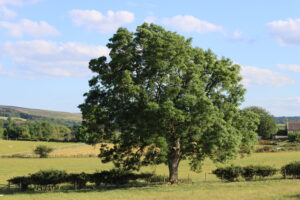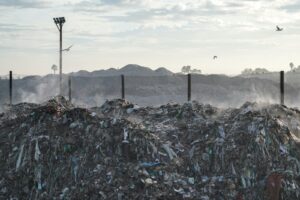Is there an environmentally friendly way to die?
Rituals of burying the dead are universal across cultures and civilisations, with the first-ever funeral recorded in 60,000 BC with Neanderthals using flowers and antlers to decorate the dead.
In 2015 there were 57 million recorded deaths globally, and it is estimated that there are 500,000 deaths each year in the UK alone, as our population continues to grow so will these figures.
At Environment Journal we wanted to investigate the environmental impact of the modern burial on this scale.
The traditional burial process involves embalming the body, this is the process of removing all bodily fluids and gasses and replacing them with formaldehyde, a solution which according to the World Health Organisation (WHO) is carcinogenic.
The body is then typically buried in steel-lined wood caskets, in America roughly 30 million feet of wood is felled for caskets every year, and it is often tropical wood such as mahogany.
But does it always have to be this way?
Trends in the industry

Alma Kettles, director of CairnBrae Natural Burials told Environment Journal that she is seeing a change in trends in the industry, with increasing numbers of people choosing a natural rather than a traditional burial.
Ms Kettles said: ‘A natural burial offers a more eco-friendly approach to a traditional burial; it involves the body’s return to the earth without the use of toxic preservation chemicals that pollute the ground,’ adding, ‘A natural burial supports and sustains the cycle of life; it doesn’t compromise it.’
‘Instead of cutting down trees to produce coffins we plant trees. Instead of erecting quarried granite headstones we mark graves with natural fieldstones. Instead of allowing litres of toxic embalming fluid to leach from the body and poison the soil, we allow the soil to rest and regenerate.’
However, a YouGov survey found that more than three times as many people in the UK now want to be cremated as those wishing to be buried, which raises new environmental questions.
When we spoke to Justin Smith, director of Cemetery Development Services (CDS) who design and develop crematoriums, he told us that it is much more important to look at the environmental cost of cremation.
Mr Smith said: ‘With 80% of the population choosing cremation over burial this is where we need to place our attention.’
‘Every cremation releases about 250kg of carbon dioxide into the atmosphere, it is therefore important to raise public awareness and move away from these traditional cremation methods.’
CDS are working to encourage their clients to look for alternative energy sources in the form of electric cremation and they are also working to develop creative ways to become carbon neutral.
On one of their sites, they are using the heat exchange from the electric cremator to heat the whole crematorium building and also a greenhouse which will grow plants for the local council.
Electric and water burials

Environment Journal spoke to Dennis Jacobs from DFW, a Netherlands-based company who design and manufacture electric cremators, which do not use oil or gas to generate the intense heat required.
Mr Jacobs said: ‘Our electric cremators are not the first of their kind, but we brought to the market the leading model, it is much more efficient.’
‘The overall energy consumption is significantly lower and you can also tap into renewable energy sources.’
‘With an electric cremator, you only release the CO2 that is already in the body.’
‘In the Netherlands, we only sell electric cremators and we are now beginning to see a lot more interest across the rest of Europe, particularly in the UK.’
Another more environmentally friendly option is water cremation. During a water cremation, water and an alkaline solution break down the body instead of flames.
Environment Journal spoke to Sandy Sullivan, director of Resomation, a UK based company who specialise in natural and water cremations where the body decomposes in alkaline rather than being cremated.
It’s a recent addition to the industry but has not been without controversy.
When water cremation was first proposed in New York, the New York State Catholic Conferences spoke out against it, saying that it does not show enough ‘sufficient respect’ for the dead.
However, if more people are choosing to be cremated it could be a much more environmentally friendly solution.
According to Resomation, using water instead of flames would save 95,000 tonnes of CO2 from being released annually.
Mr Sullivan said: ‘In 2010 the Dutch government commissioned a study where they tested the environmental benefits of water cremation against a flame cremation.’
‘They looked at 18 environmental impact categories and found that water cremation was better in 17 of 18 of the categories.’
‘They found that water cremation had a carbon footprint that was six times lower than a traditional cremation.’
Currently water cremation is only available in the U.S. but Sullivan expects water cremator installations to enter the UK market in 2020.
Priorities

There are many considerations to be made when preparing for a funeral: costs, religious practices, availability of services, and environmental impact has not always been a top priority.
But in the face of the climate crisis, and with statistics revealing that one cremation releases as much carbon dioxide as a 500-mile round car trip, it is becoming increasingly important that individuals ensure that their parting impact on the planet is a positive one.
With more options becoming available, it will become a lot easier for individuals to make a more informed and environmentally conscious choice, choosing natural burials or electric and water cremations over the traditional options.
Photo Credit – Pixabay













